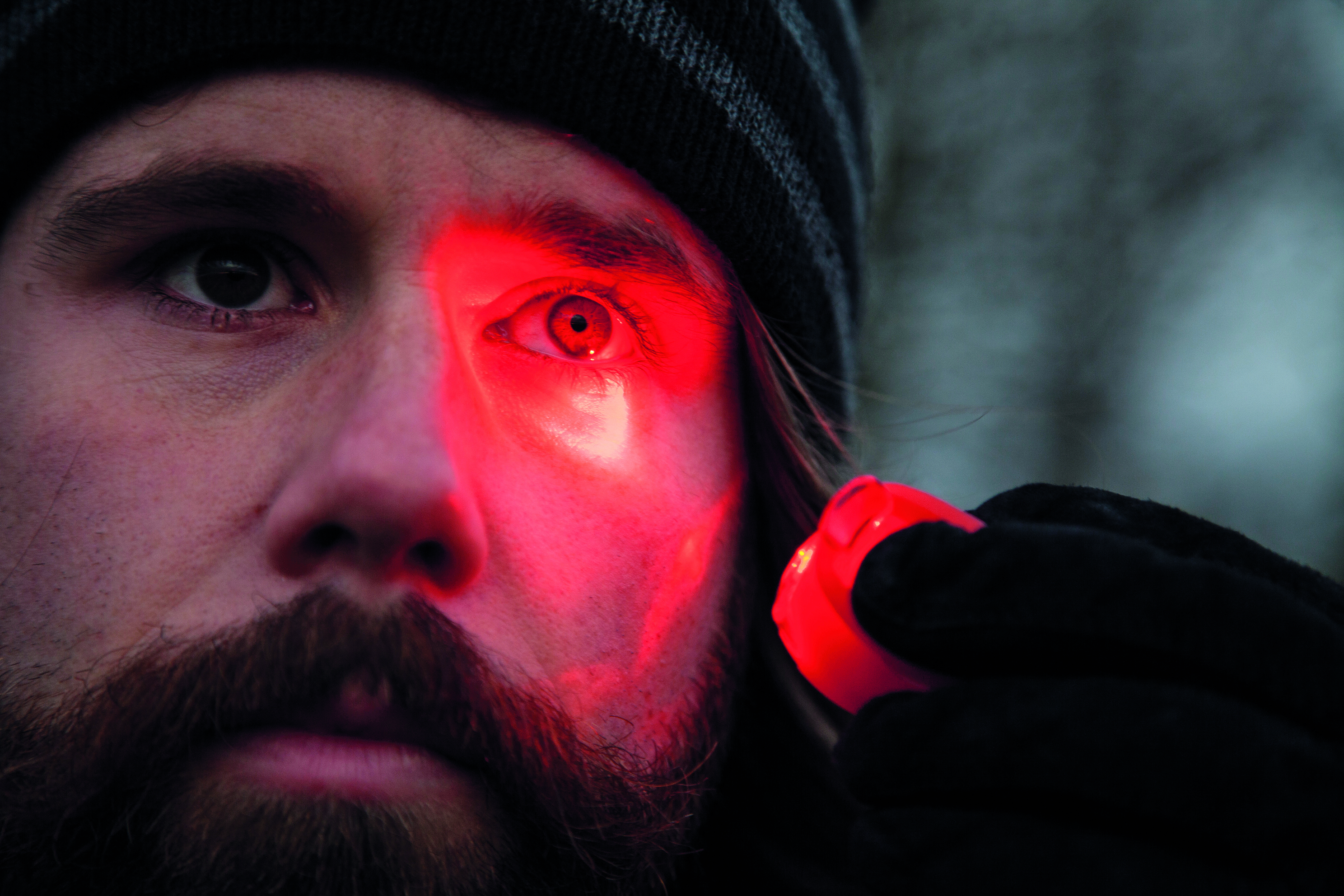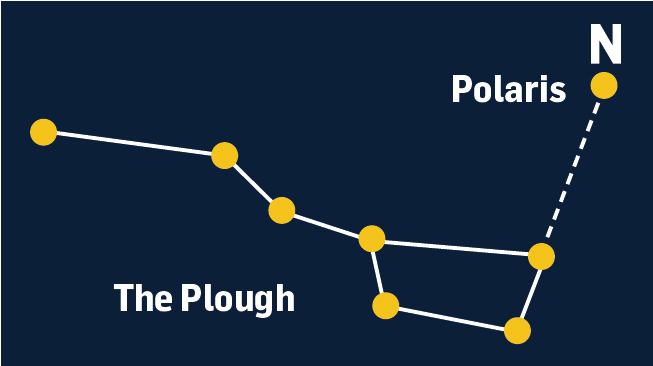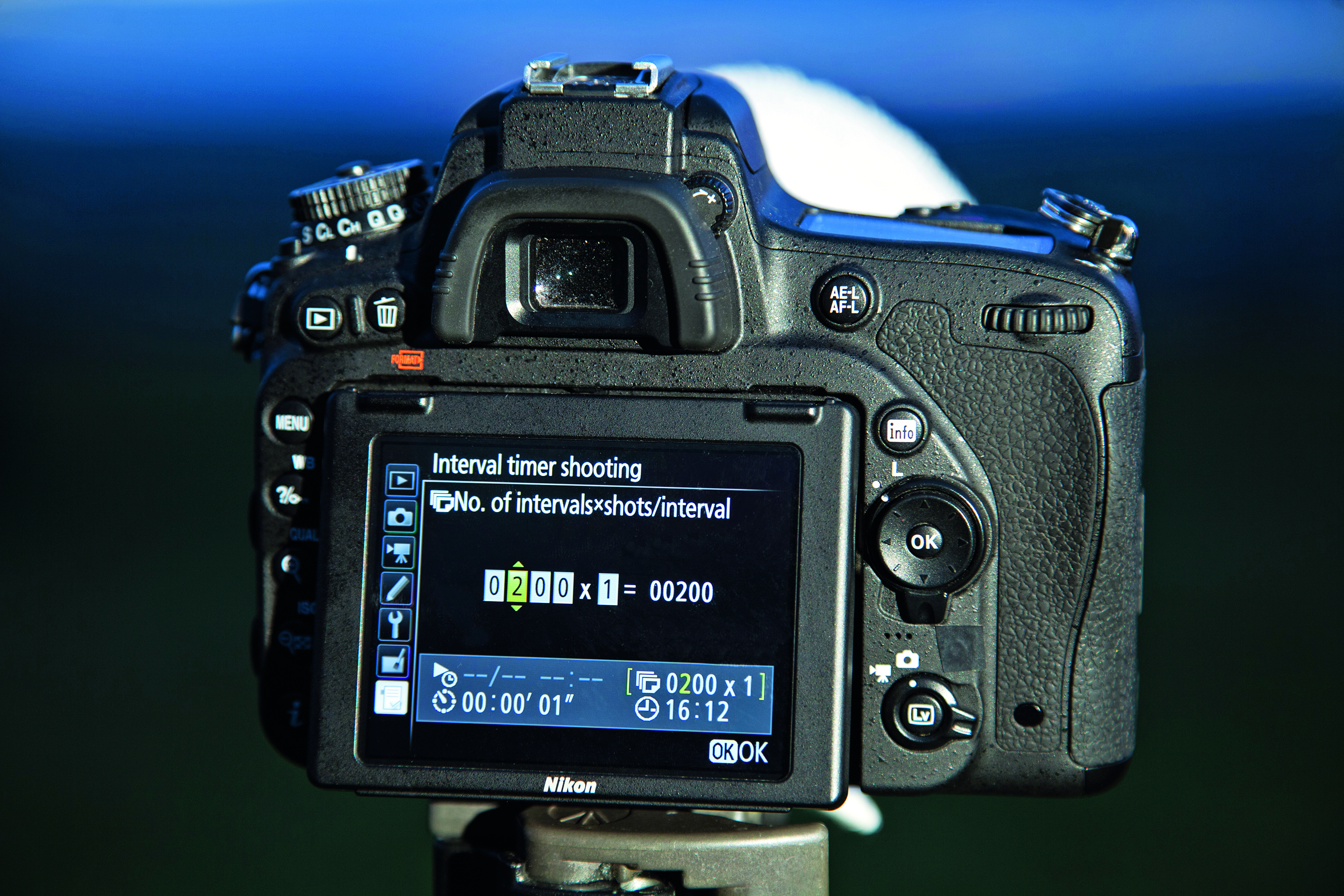Watch video: Home photography ideas – Shoot star trails
Photography projects at home
• Home photography ideas
Useful home photography kit
• Best tripods
• Best lighting kits
• Best reflectors
• Best macro lenses
Star trail photos, with moving stars forming streaks of light across the night sky, are always popular. And this is the perfect time to shoot them, since we're spending so much time at home and the skies get clearer at this time of year – especially with the reduced pollution from the lack of traffic!
In this tutorial, we’re going to walk you through how to shoot source images for a star trail photo, and then how to merge them together in Lightroom to create that perfect image.
If you’re in the northern hemisphere, you’ll need to aim for Polaris, the north star, to achieve the classic ‘circular’ star trail look. If you’re in the southern hemisphere, you’ll need to find the south celestial pole.
Light pollution means that the most successful shots are achieved in locations with dark skies, but with a little consideration you can still get great results in your back yard. The main thing is to keep an eye on the weather, and get set up in advance when daylight is still on your side.
Here's how to get everything set up, capture the core images, then take it into the digital darkroom…
• Best online photography courses
The best camera deals, reviews, product advice, and unmissable photography news, direct to your inbox!
Get set up to shoot start trails
When you’re working in the dark, advanced preparation is crucial


Your eyes have two types of light receptors: rods and cones. Rods are used in very low light but do take a while to adjust to darkness – typically 15 minutes or so. They are also extremely sensitive; all it takes is a brief burst of light and the clock is reset, and you have to wait another 15 minutes. The good news is that rods can’t detect red light, but cones can, so if you use a red light at night, you’ll be able to find your way around without ruining your night vision.
1. Clear skies
Check the light pollution and the weather before you go, and pick a location that will be clear of clouds and unwanted lights.
2. Wrap up warm
Depending on where you live, it can get cold at night! Avoid misting by using a towel or hand warmers to wrap around the lens.
3. Night vision
Bring a pocket light, and make sure it’s red or has a red filter. Using a red light will help you keep your night vision (see above).
4 Twilight zone
Get set up to compose your scene. This will be difficult in darkness, which is why prepping your kit beforehand is important.
Key skill: Finding true north
Aim at this fixed point in the night sky to get circular star trails

No stars sit as perfectly in the south as Polaris does in the north. To locate the south celestial pole, find the Southern Cross and draw an imaginary line from the top to the bottom, and then extend it about four times.
1. Navigate with a compass
Compose your photo with Polaris in the centre (for circular shapes) or off to one side for beautifully curved star trails, as in our shot. To find Polaris, take a compass reading to locate north, then aim your camera in that direction and slightly up, and look for the brightest star.

2 Map the stars
You can find true north even if you don’t have a compass. You will need to know at least one constellation, though, and that’s Ursa Major (The Plough). Find the end of the ‘pan’ part of the shape (see above), then plot an imaginary line up from the edge of the pan to the very next bright star.
And now… shoot for the stars
The first step in creating a star trail is to shoot a sequence of long-exposure images

1. Hold still
We used a bungee cord to tie our bag to the tripod to stabilize it; when shooting long exposures, you need to keep the camera as still as possible. Anything you can do to steady the camera is a good thing – a bungee cord takes up little space and is always worth throwing in your bag.

2. Focus manually
The AF system won’t have enough light to focus properly so you must focus manually. If there are distant lights, focus on these and then recompose. If not, get a friend to stand 40 to 50 feet in front of the camera and point a light towards you, focus on the light, then recompose. Your best bet is to use an ultra wide-angle lens to fit more sky in your photos – and don’t forget to include some foreground, to give your photos some sense of location.
• Best lenses for astrophotography

3. Warm the glass
Keep your lens warm to prevent it misting up as the night gets colder. We wrapped our lens with a heated hand warmer and a small towel, with a rubber band to hold it around the barrel. Be careful not to knock the focus ring when wrapping your flannel around the lens barrel though.

4. Get set up
Set your lens to its widest aperture. The stars are so far away a shallow depth of field won’t make any difference to the focusing of the shot. Set a shutter speed of between 20 and 30 seconds at ISO200 and take a test shot. If your shots are too dark, increase the ISO.

Change your white balance to Tungsten. This will remove the orange cast made by any nearby light pollution
5. Expose to the right
If your location suffers from light pollution, try the ‘expose to the right’ technique. Take a shot and check the histogram: you want the graph to stack up to the right-hand side, but without clipping. This should allow your sensor to capture more detail. You can correct the exposure in post-production.

6. Start your sequence
Open the intervalometer setting in your camera’s menu; if your camera doesn’t have this feature, use an external intervalometer to set the number of shots. The number will depend on how long you want your trails to be – we set 200 shots at an exposure time of 30 seconds each.
Short, sharp shots
Instead of shooting a sequence of hundreds of short exposures and merging them in Photoshop, it’s perfectly possible to shoot a single, super-long exposure of an hour or more – however, the longer the exposure, the higher the noise will be in the resulting image.
This is because image sensors generate heat from their own electrified circuits, and the sensor records this heat and electrical interference as noise. As such, it’s best to keep exposures below one minute and then stack them in editing software.
Stack 'em up in post
Got your shots? The real magic happens in the digital darkroom…

If you find your images do have lots of noise, don’t worry because you can reduce this in Lightroom. Go to the Develop module, and in the Detail panel (at the bottom-right of screen – you may have to scroll down), under Reset Noise Reduction move the Luminance slider up until the noise is acceptable.
1. Import your shots
Go to File > New Catalogue. Name your catalogue Star Trails and click on Save. The (empty) Library window will open up. Navigate to your images, select them all, press Cmd / Ctrl + A, and drag them onto the grey import area. Click on the import button in the window that appears.

2. Edit as needed
Move to the Develop module. On the right hand-side you’ll see the tool panel. Starting from the top, switch the white balance to Tungsten, to alleviate the light pollution. Add fill light to brighten the midtones, and then increase the vibrance to boost the colours without clipping them.

3. Export to Photoshop
Select all the photos in the filmstrip by going to Select > All and clicking on the Sync button. Tick Check all before clicking on Synchronize, and these adjustments will be applied to all the selected images. Click on Edit, then choose Photo > Edit In > Open As Layers in Photoshop.

4. Merge the trails
The images open on separate layers. Drag the first image you took to the bottom and set blending mode to normal. Select the top layer, change the blending mode to Lighten, then right-click and pick Copy layer style. Go to Select > All layers, right-click on any layer and pick Paste layer style.

5. Add a mask
If you have any aeroplane light trails, or extraneous light leaking in, add a mask to the layer in question, grab your Brush tool (press B) and paint with black to eliminate the distraction. Be careful not to brush out the stars as well, as this will result in gaps in the star trails themselves.

6. Save it
You’re nearly done. Now you just need to save the image. Go to File > Save As and choose a suitable file type – JPEGs are usually the most useful. Give the picture a file name and click on Save. Your image will export, giving you the final photograph.
• The beginner's guide to photographing the night sky
N-Photo: The Nikon Magazine is a monthly publication that's entirely dedicated to Nikon users. For the best news, reviews, projects and more, subscribe to N-Photo today!
Read more:
Best star tracker camera mounts for astrophotography
The best camera for astrophotography: tools and lenses to shoot night skies
The best lenses for astrophotography: fast ultra-wide lenses for the night sky
N-Photo: The Nikon Magazine is a monthly publication that's entirely dedicated to Nikon users. As a 100% independent magazine, you can be assured of unbiased opinion from a trustworthy team of devoted photography experts including editor Adam Waring and Deputy Editor Mike Harris.
Aimed at all users, from camera newcomers to working pros, every issue is packed with practical, Nikon-specific advice for taking better photos, in-depth reviews of Nikon-compatible gear, and inspiring projects and exciting video lessons for mastering camera, lens and Photoshop techniques.
Written by Nikon users for Nikon users, N-Photo is your one-stop shop for everything to do with cameras, lenses, tripods, bags, tips, tricks and techniques to get the most out of your photography.


